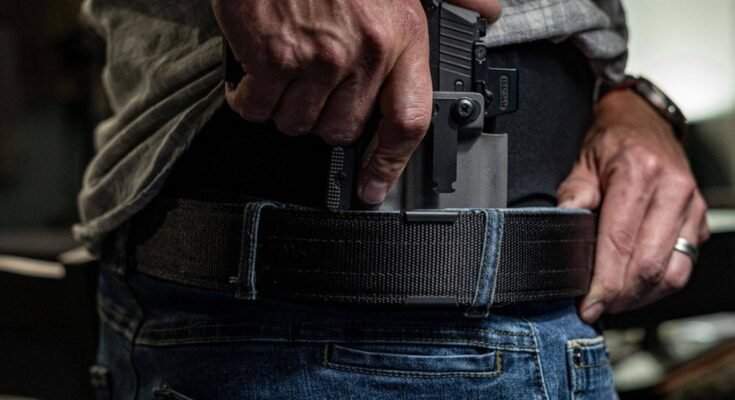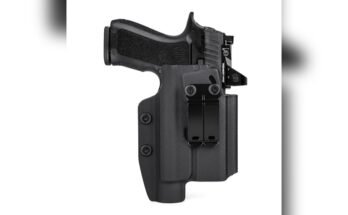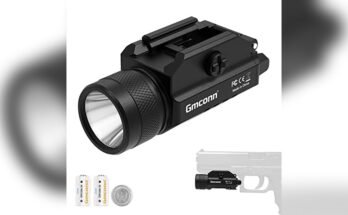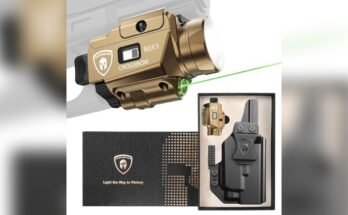I have fit, worn, and tested countless holsters over the years. I know the pain of a holster that pinches, prints, or fails to retain. The right holster size turns carrying from a chore into a quiet routine. If you have asked, How do I choose the right holster size?, you are in the right place. I will simplify the process with steps you can trust. You will get clear rules, smart tips, and real examples that work in daily life.

Source: www.ebay.com
What Holster Size Really Means
Holster size is not only about small, medium, or large. It is about an exact match between your gun’s make, model, and design. A good fit covers the trigger guard, clamps the slide or frame well, and holds the gun at the right depth.
Think of holster size like a custom shoe. If the length is off by a few millimeters, comfort and control suffer. The best holsters are model-specific. One holster for many guns can be okay for the range, but not for daily carry.
Look at these core parts that affect size:
- Overall length. The holster must match barrel and slide length.
- Trigger guard shape. This is key for retention and safety.
- Rail and optics. Lights, lasers, or red dots change the required mold.
- Controls. Safeties, takedown levers, or tall sights need space.
Many premium makers publish fit lists by gun model, generation, barrel length, and attachments. Use those lists first. When in doubt, choose the holster made for your exact model and add-ons.

Source: www.ebay.com
Measure Your Firearm Correctly
You need three simple measurements:
- Overall length. From the back of the slide to the muzzle.
- Slide or frame height. From the top of sights to the bottom of the grip.
- Width at the slide and the widest point of the frame.
Write down your gun’s exact model, barrel length, and any upgrades. Examples:
- Glock 19 Gen 5 with no optic and no light.
- Smith & Wesson M&P 2.0 Compact with Holosun 507C.
- Sig P365 with TLR-7 Sub and tall night sights.
If you add an optic, light, or threaded barrel later, you may need a new holster or a new shell. Modular holsters help, but only within the maker’s supported options.

Source: www.ebay.com
Match Holster Types And Carry Positions
Your carry position changes the holster size, shape, and ride. Pick the method first, then the holster.
Common types and what sizing means:
- Inside the waistband (IWB). Needs a slim profile and full trigger coverage. Size must match the gun and any attachments.
- Appendix IWB (AIWB). Often shorter to reduce pressure when seated. A wedge or claw helps tuck the grip.
- Outside the waistband (OWB). Larger footprint is fine. A longer holster can improve stability.
- Pocket. Very small guns only. The holster must hide the shape, stay in the pocket on the draw, and fit the pocket depth.
- Shoulder. Longer holster bodies are common. Balance matters. Measure torso and strap length.
- Belly band or leggings. The “holster” area must fit your gun’s length and cover the trigger.
If you carry appendix, a compact or long slide holster can spread pressure, but it must allow you to sit. For strong side IWB at 3–4 o’clock, a longer holster often prevents the grip from tipping out.

Source: www.ebay.com
Understand Fit Levels And Retention
Retention is how the holster holds the gun. It can be friction-based, click-based on the trigger guard, or use straps and hoods. Size and retention go hand in hand.
Key points:
- Passive retention. Common on Kydex. You feel a click at the trigger guard. Adjust with screws.
- Active retention. Straps or hoods add security. Better for duty or open carry.
- Fit depth. The gun should seat fully. The trigger guard must be fully covered. Partial coverage is a red flag.
Test at home with a safe, unloaded gun. You should feel a firm draw and a clear re-holster path. If it wobbles or drags at the muzzle or optic, the size is off.

Source: gear-report.com
Materials, Ride Height, Cant, And Claw
Material affects fit. Kydex holds exact shape. Leather breaks in and can loosen a bit. Hybrid mixes Kydex and leather for comfort.
Size interacts with four setup choices:
- Ride height. How deep it sits. Too high and it prints. Too low and the grip is hard to grab.
- Cant. Angle of the holster. A slight forward cant helps at 3–4 o’clock. Neutral or slight negative can work for appendix.
- Claw or wing. Pushes on the belt to tuck the grip. Great for concealment on compact and full-size guns.
- Muzzle length. A slightly longer holster can spread pressure and reduce hot spots.
If you wear slim shirts, a claw and a modest ride height make a big difference in concealment.
Belt, Clothing, And Body Type
The best holster in the world fails with a flimsy belt. Use a gun belt with enough stiffness to hold weight. A belt 1.5 inches wide works for most holsters and clips.
Clothing matters. A tapered shirt or light jacket hides more. Your body type changes how the grip prints. If you are lean with narrow hips, you may prefer a longer holster body for stability. If you have more midsection mass, a wedge or foam pad at appendix helps comfort and concealment.
Try different ride heights and cant settings in front of a mirror. Move, sit, and bend. Your size choice should work in real life, not just standing still.
Common Sizing Charts And Model-Specific Fits
Holster makers publish size charts tied to specific guns. These charts include:
- Exact models and generations.
- Barrel lengths and slides.
- Light and optic cuts.
- Sight channel height.
Follow the chart for your gun and add-ons. If a maker lists “fits Glock 43/43X,” check notes about rail, optics, or aftermarket barrels. For lights, choose the holster built for your exact light. A “light-bearing” holster for one model may not fit a different light with the same lumen rating.
Industry data shows fewer returns and better draw times when buyers use model-specific fits rather than “one size fits most” designs. Pick precision when you can.
Testing Fit: Safe At-Home Checklist
Do a dry test with an unloaded firearm. Triple-check it is unloaded. Point in a safe direction.
Run this quick check:
- Seat the gun. It should lock in with a clear click or secure friction.
- Shake test. Turn it upside down over a bed. It should not fall out with light shakes.
- Draw stroke. The draw should be smooth and straight. No snag on sights, optic, or light.
- Re-holster. The mouth should stay open. Your trigger finger should not enter the guard.
- Comfort. Sit, stand, bend, and drive. Note any pinch points.
If any step fails, the size or setup is wrong. Adjust screws and clips first. If that fails, pick a different holster size or model.
Mistakes To Avoid
I have made these mistakes. You can skip them.
- Buying for the gun only, not the light or optic. Attachments change everything.
- Ignoring belt stiffness. A soft belt ruins retention and comfort.
- Choosing too short a holster for appendix. Longer bodies can spread pressure.
- Over-tightening retention screws. This can crack Kydex or bind the draw.
- Skipping fit tests at home. Ten minutes now saves weeks of discomfort.
Care, Break-In, And Adjustments
Leather needs break-in. Wrap your unloaded gun in a thin bag and seat it overnight if it is too tight. Use leather conditioner sparingly. Do not soak.
Kydex rarely needs break-in. Use the retention screws and add blue thread locker when dialed in. Check screws every few weeks.
Inspect clips, loops, and hardware. Replace worn parts. A small change to ride height or cant often fixes printing or hot spots without changing holster size.
Frequently Asked Questions Of How Do I Choose The Right Holster Size?
How tight should my holster fit?
It should hold the gun with mild shake resistance and give a clean, repeatable draw. You should feel a click or steady friction. If you must yank hard, it is too tight.
Do I need a different holster if I add a weapon light?
Yes, in most cases. Lights change the shape of the front end. Pick a holster molded for your exact gun and light combo.
Will one holster fit guns in the same family?
Sometimes, but do not count on it. Small changes in generations, slides, or sights can ruin the fit. Use model-specific holsters when possible.
Does a longer holster help with comfort?
Often yes, especially at appendix. A longer muzzle end spreads pressure. It can feel more stable while sitting.
What belt width works with most holsters?
A 1.5-inch stiff gun belt works for most clip styles. Check the clip size on your holster to match.
Can I re-holster one-handed?
You should be able to. If the holster mouth collapses, adjust or pick a model with a reinforced mouth.
Is leather or Kydex better for sizing?
Kydex gives a precise, repeatable size. Leather molds to you over time. Both work if they cover the trigger and hold the gun securely.
Conclusion
Choosing the right holster size is a system. Start with your exact gun, light, and optic. Match the holster type to your carry spot. Use a solid belt. Dial in ride height, cant, and retention. Test at home until it feels natural. Small tweaks deliver big wins.
Take one step today. Write down your gun and attachments. Check a maker’s fit chart. Order the model-specific holster that matches your setup. If you want more tips, subscribe, ask a question, or share what works for you. Your ideal carry is closer than you think.
Watch This Video on How do I choose the right holster size?



